Refine search
Actions for selected content:
23990 results in Ancient history
Chapter 17 - The Emperor, the People and Urban Violence in the Fifth and Sixth Centuries
- from Part III - Religious Violence in Late Antiquity
-
-
- Book:
- Religious Violence in the Ancient World
- Published online:
- 18 September 2020
- Print publication:
- 01 October 2020, pp 389-405
-
- Chapter
- Export citation
Part I - Methodology
-
- Book:
- Religious Violence in the Ancient World
- Published online:
- 18 September 2020
- Print publication:
- 01 October 2020, pp 15-68
-
- Chapter
- Export citation
General Index
-
- Book:
- Religious Violence in the Ancient World
- Published online:
- 18 September 2020
- Print publication:
- 01 October 2020, pp 423-432
-
- Chapter
- Export citation
Chapter 8 - John Chrysostom and the Strategic Use of Fear
- from Part III - Knowledge, Power, and Symbolic Violence
-
-
- Book:
- Social Control in Late Antiquity
- Published online:
- 18 September 2020
- Print publication:
- 01 October 2020, pp 173-187
-
- Chapter
- Export citation
Chapter 16 - Fighting for Chalcedon: Vitalian’s Rebellion against Anastasius
- from Part III - Religious Violence in Late Antiquity
-
-
- Book:
- Religious Violence in the Ancient World
- Published online:
- 18 September 2020
- Print publication:
- 01 October 2020, pp 367-388
-
- Chapter
- Export citation
Chapter 2 - Holy Beatings
- from Part I - Women and Children First
-
-
- Book:
- Social Control in Late Antiquity
- Published online:
- 18 September 2020
- Print publication:
- 01 October 2020, pp 39-58
-
- Chapter
- Export citation
Chapter 12 - Coercing the Catechists
- from Part III - Knowledge, Power, and Symbolic Violence
-
-
- Book:
- Social Control in Late Antiquity
- Published online:
- 18 September 2020
- Print publication:
- 01 October 2020, pp 256-274
-
- Chapter
- Export citation
Chapter 8 - The Great Persecution and Imperial Ideology: Patterns of Communication on Tetrarchic Coinage
- from Part II - Religious Violence in the Graeco-Roman World
-
-
- Book:
- Religious Violence in the Ancient World
- Published online:
- 18 September 2020
- Print publication:
- 01 October 2020, pp 203-227
-
- Chapter
- Export citation
General Introduction
-
-
- Book:
- Religious Violence in the Ancient World
- Published online:
- 18 September 2020
- Print publication:
- 01 October 2020, pp 1-14
-
- Chapter
- Export citation

Power and Place in Etruria
- The Spatial Dynamics of a Mediterranean Civilization, 1200–500 BC
-
- Published online:
- 29 September 2020
- Print publication:
- 08 October 2020
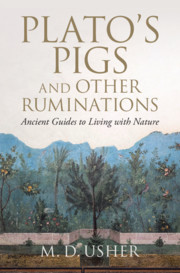
Plato's Pigs and Other Ruminations
- Ancient Guides to Living with Nature
-
- Published online:
- 26 September 2020
- Print publication:
- 15 October 2020
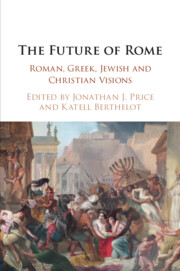
The Future of Rome
- Roman, Greek, Jewish and Christian Visions
-
- Published online:
- 24 September 2020
- Print publication:
- 08 October 2020
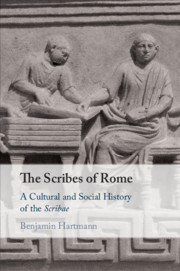
The Scribes of Rome
- A Cultural and Social History of the Scribae
-
- Published online:
- 22 September 2020
- Print publication:
- 17 September 2020
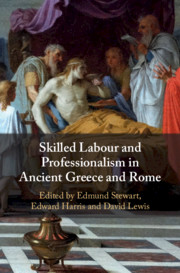
Skilled Labour and Professionalism in Ancient Greece and Rome
-
- Published online:
- 18 September 2020
- Print publication:
- 03 September 2020
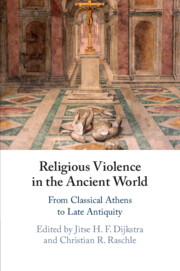
Religious Violence in the Ancient World
- From Classical Athens to Late Antiquity
-
- Published online:
- 18 September 2020
- Print publication:
- 01 October 2020
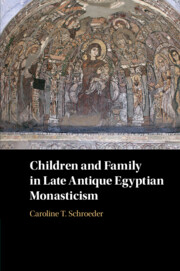
Children and Family in Late Antique Egyptian Monasticism
-
- Published online:
- 18 September 2020
- Print publication:
- 17 September 2020

Social Control in Late Antiquity
- The Violence of Small Worlds
-
- Published online:
- 18 September 2020
- Print publication:
- 01 October 2020
19 - The Rite of the Reconciliation of Penitents at the Lateran Basilica
-
-
- Book:
- The Basilica of Saint John Lateran to 1600
- Published online:
- 27 August 2020
- Print publication:
- 17 September 2020, pp 400-427
-
- Chapter
- Export citation
Chapter 8 - The Ties That Bind
- from Part III - A Social History
-
- Book:
- Children and Family in Late Antique Egyptian Monasticism
- Published online:
- 18 September 2020
- Print publication:
- 17 September 2020, pp 160-190
-
- Chapter
- Export citation
5 - The First Residential Phases of the Lateran Area and a Hypothesis to Explain the So-Called Trapezoidal Building
-
-
- Book:
- The Basilica of Saint John Lateran to 1600
- Published online:
- 27 August 2020
- Print publication:
- 17 September 2020, pp 71-90
-
- Chapter
- Export citation
